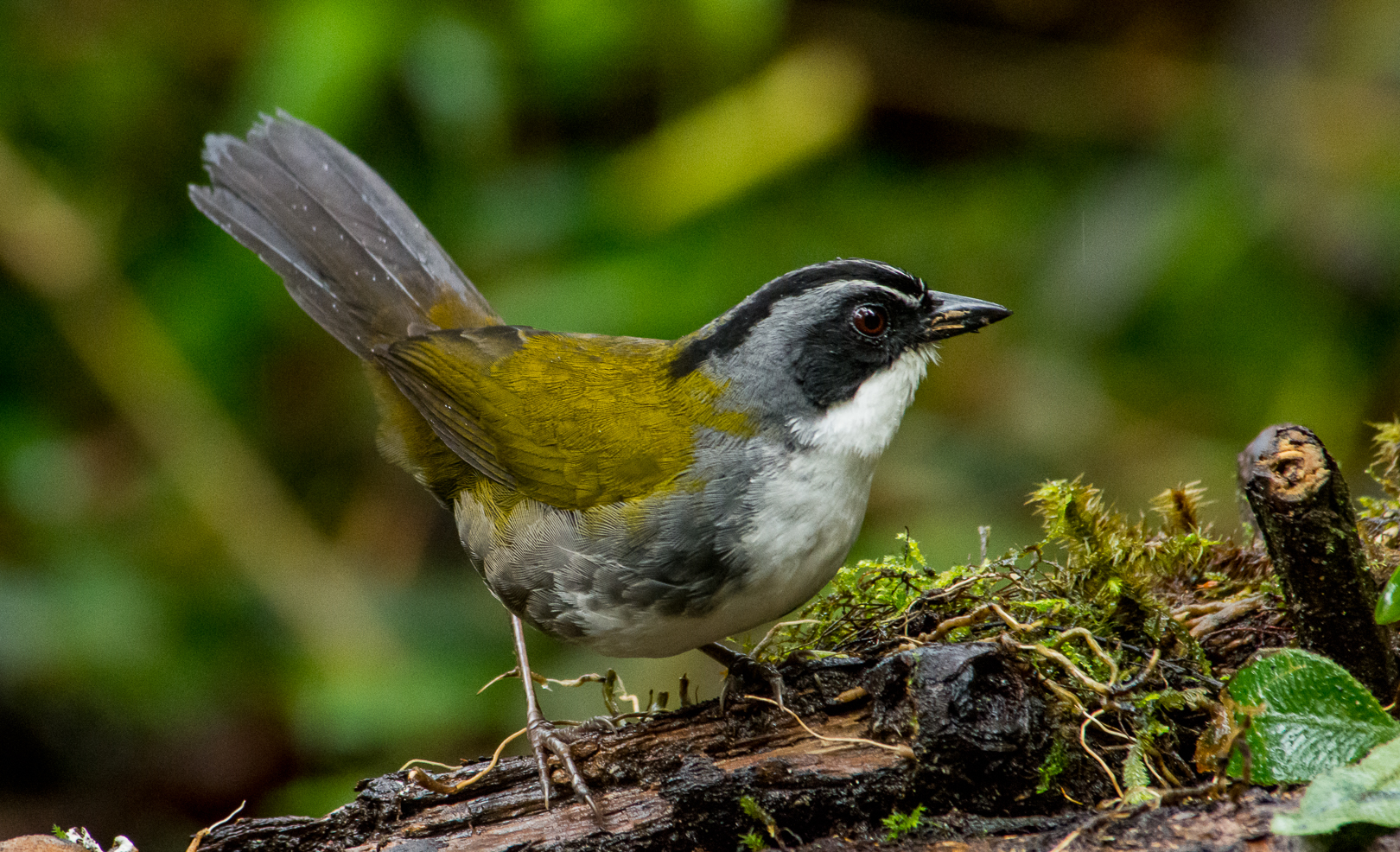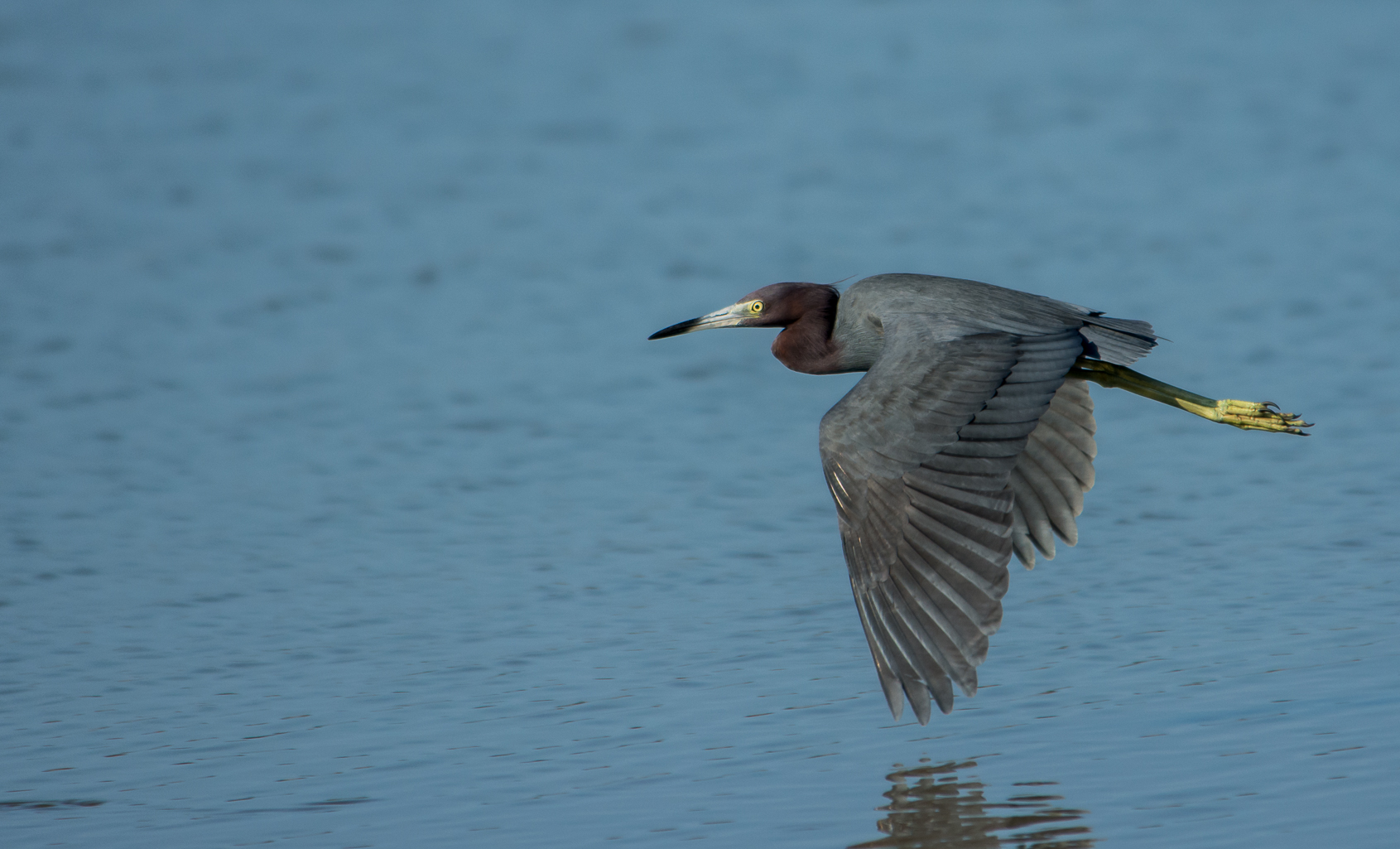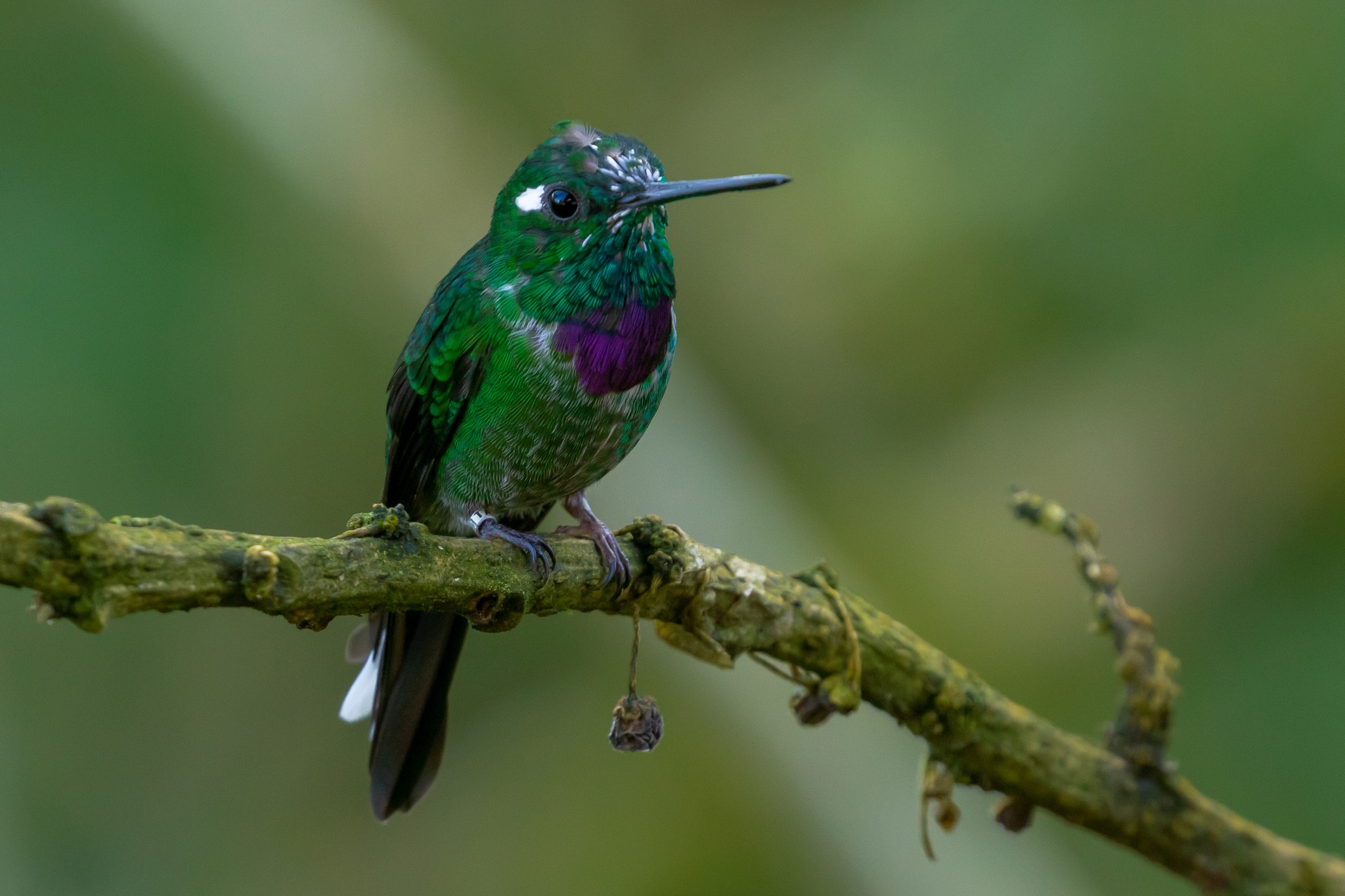It is a very showy hummingbird because of its long iridescent violet tail. This species is only found in South America. Its name Aglaiocercus means splendorous tail and derives from the Greek roots aglaia = splendor and kerkos = tail. Its epithet coelestis comes from Latin and means heavenly.

The bay-headed tanager (Tangara gyrola) is a medium-sized passerine bird. This tanager is a resident breeder in Costa Rica, Panama, South America south to Ecuador, Bolivia and southern Brazil, and on Trinidad.
This species was until recently considered a subspecies of A. torquatus. Like other species of the genus, it is a bird with semi-terrestrial habits that remains solitary or in pairs. Its name Arremon derives from the Greek root arrhemon = silent and its epithet assimilis derives from Latin and means similar, indicating a similarity with another species.
The Santa Marta mountain tanager (Anisognathus melanogenys), also known as the black-cheeked mountain tanager, is a species of bird in the family Thraupidae. It is endemic to highland forest in the Santa Marta Mountains in Colombia. It is closely related to the widespread lacrimose mountain tanager, but the distributions of the two do not overlap.
The little blue heron (Egretta caerulea) is a small heron. It breeds in the Gulf states of the US, through Central America and the Caribbean south to Peru and Uruguay. It is a resident breeder in most of its range, but some northern breeders migrate to the southeastern US or beyond in winter. There is post-breeding dispersal to well north of the nesting range, as far as the Canada–US border.
The genus lipaugus refers to the gray color of this bird and derives from the Greek term lipauges which means dark. The epitheus weberi was dedicated to Walter H. Weber for his great contribution to the Sociedad Antioqueña de Ornitología (SAO) and for promoting the study and conservation of the birds of Colombia. The name in English (Chestnut-capped Piha) refers to its most contrasting morphological characteristic (Coronilla castaña) and the name in Spanish (Piha Antioqueña) refers to the department of Antioquia, the only region of Colombia where this bird has been found.
It is a small hummingbird with a short beak, endemic to the biogeographic Choco. It has an iridescent purple pectoral crescent and conspicuous, mainly white inner rectrices. Its name Urosticte means spotted tail and derives from the Greek roots oura = tail and stiktos = spotted. The Benjamin Pitet was established in honor of the naturalist and merchant John Benjamin Leadbeater.
The keel-billed toucan (Ramphastos sulfuratus), also known as sulfur-breasted toucan or rainbow-billed toucan, is a colorful Latin American member of the toucan family. It is the national bird of Belize. The species is found in tropical jungles from southern Mexico to Colombia. It is an omnivorous forest bird that feeds on fruits, seeds, insects, invertebrates, lizards, snakes, and small birds and their eggs.
It is the only hummingbird in the highlands with completely white underparts. Her name Amazilia was established in honor of Amazili, who was an Inca heroine in Jeam Marmontel’s novel Les Incas, ou la destruction de l’Empire du Pérou. His French epithet was established in honor of Francia Bourcier, the daughter of the naturalist Jules Bourcier, an expert in hummingbirds.
Bird from the highlands of the Andes, silent and inconspicuous despite its large size. Momotus comes from the specific name Ramphastos momota and the epithet Aequatorialis is a term from the Latin language that means equatorial.












